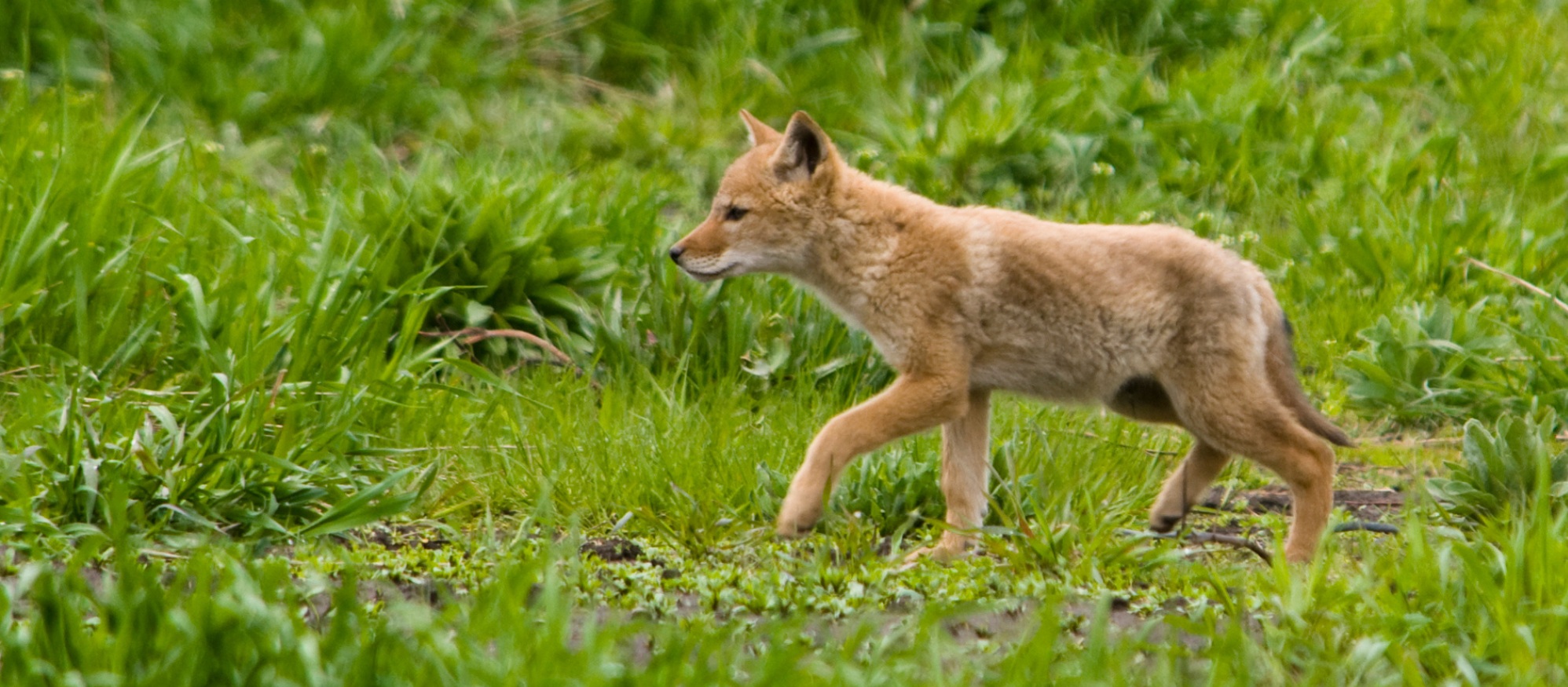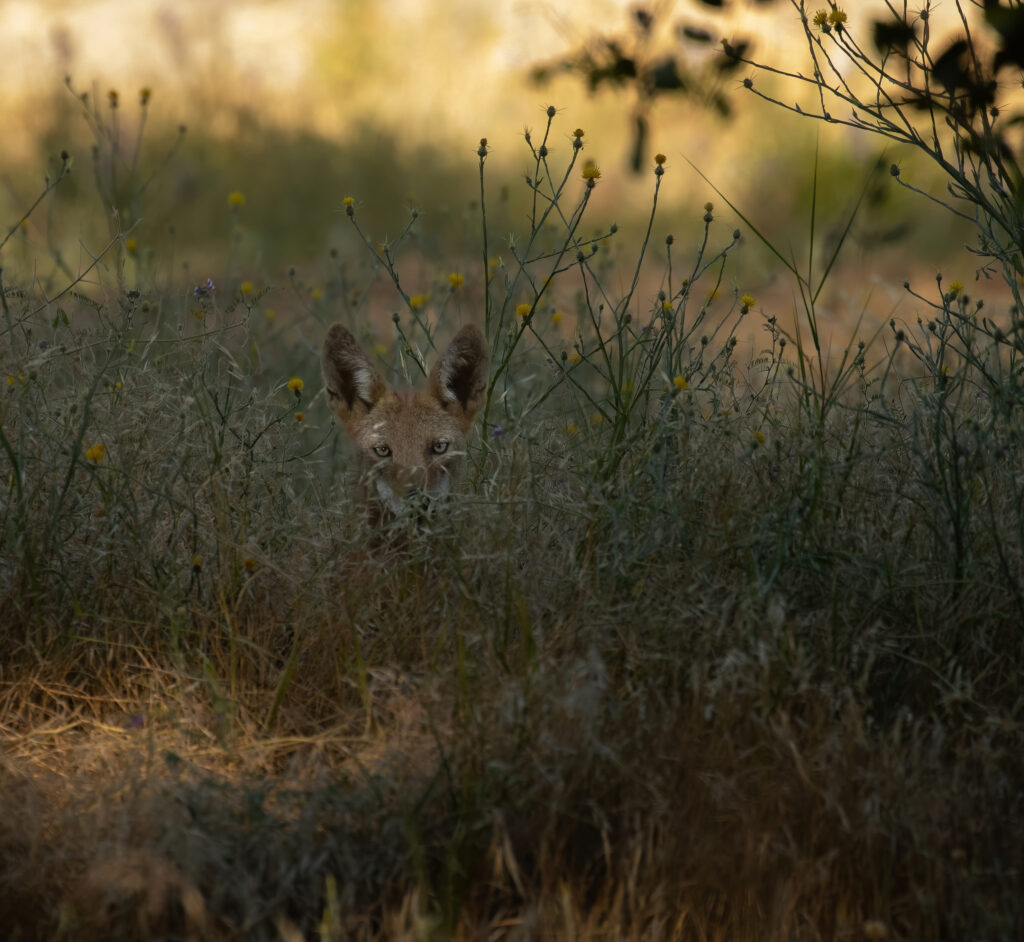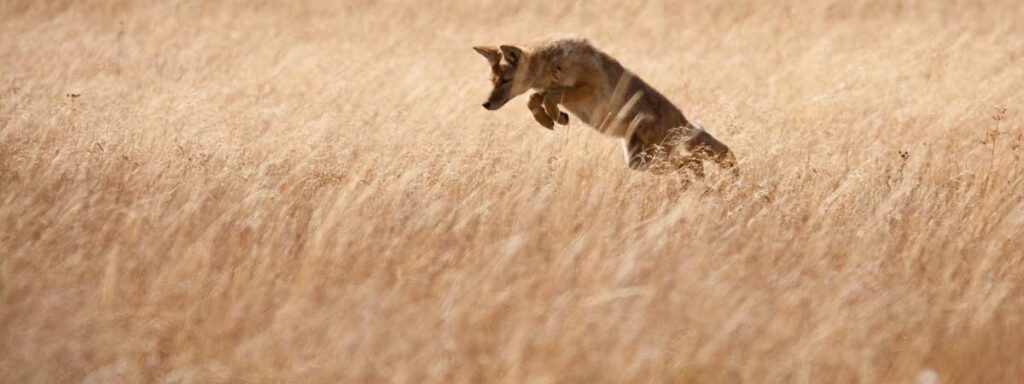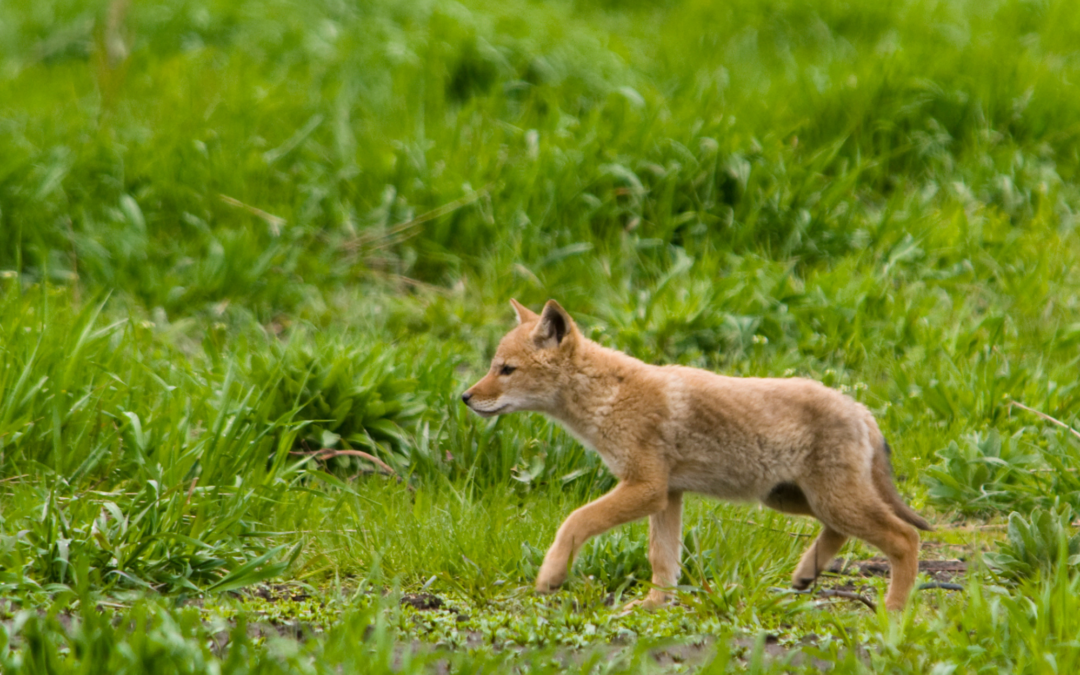
Science, ethics, and Michigan coyotes
On June 3, 2025, an Ingham County judge ruled in favor of closing coyote hunting in Michigan during a three-month period while mother coyotes are nursing and raising pups. After the state’s Natural Resources Commission decided to shorten the season back in March 2024, hunting groups sued the agency, claiming the commission was swayed by emotion and social pressure rather than “sound scientific management”.
Nevertheless, the court upheld Michigan’s shortened coyote hunting season and determined that the commission did not violate its directive. As the judge stated: “Based on a complete and thorough review of the whole record, which is comprised of over 3,000 pages, it is abundantly clear the Commission fulfilled its duty under (state law) and used principles of sound scientific management to the greatest extent practicable in making its decision regarding the taking of coyotes.” The 66-page document for the court decision included an overview of 2024 Michigan NRC Wildlife Committee meetings discussing the coyote season, including numerous public comments for and against the change. Those weighing in included representatives from hunting groups and wildlife advocacy groups, hunters, and members of the broader public.
Dr. Nichole Biber, an Odawa tribal citizen and leader of the Wolf and Wildlife Preservation team on Michigan’s Anishinabek Caucus, was among the voices in support. She spoke about the consequences of ecological imbalance, and the importance of rethinking our relationship with the environment from domination to coexistence:
“You know, coyotes, a nonstop, unfettered, unlimited take, that’s not so good because if you’re looking at science, imbalance is coming from that. We look at Ma’iingan, the wolf. They took care of the coyote population…so here’s a consequence of just wiping them out, just like bringing the carp in [to the Great Lakes ecosystem]. So, you know, we can cling to this damaging approach that elevates…destruction or dominion as recreation, or we can sustain life in the places that are on the brink through collaboration and reorienting our relationships.” (page 30)
Another voice in support of the change came from a Michigan representative for Project Coyote, who addressed the intersection of science and ethics pertaining to wildlife. She noted the relevance of certain fields of research, such as carnivore neuroscience:
“The Pennsylvania Game Commission stated that after decades of using predator controls, such as bounties, with no effect, and the emergence of wildlife management as a science, the agency finally accepted the reality that predator control does not work, and that predators don’t compete with our hunters for game. The limiting factor is habitat. We must focus our efforts on habitat…In addition to the science, there are also deep ethical implications to year-round coyote hunting and related unethical practices, such as wildlife killing contests. Like our companion animals, coyotes have highly developed cognitive, emotional, and social capabilities. In an article in Scientific American entitled The Mind of the Predator, author Gareth Cook notes that neuroscience has discovered that coyotes and wolves and many other animals share common brain structures and processes that govern thinking and feeling in humans, and like us, have comparable capacities to experience emotional and psychological trauma. These discoveries suggest profound ethical implications for our treatment of wildlife. But Michigan law and hunting practices have not kept up with these latest neuroscience discoveries. Mainstream hunters consider it unethical to waste any animal killed, and yet coyote meat is not considered a food source for humans, and there is little demand for coyote pelts. Furthermore, wildlife killing contests that target coyotes for killing for cash and prizes remain legal across Michigan…” (page 42-43)

An Ethical Double Standard
In the lawsuit, hunter groups claimed wildlife commissions were being influenced by non-hunters. In reality, wildlife agencies often prioritize hunters and dominionistic values. State and federal wildlife agencies typically view hunters, anglers, trappers and agricultural interests as their primary “stakeholders”— shaping regulations accordingly. This narrow framing often results in institutional hostility towards carnivores like coyotes. Arguing that practices such as unrestricted year-round coyote killing should remain legal so long as the “resource” (read: overall coyote population) is not in danger of being wiped out is a value-based position, not a neutral or scientific one.
During a 2024 Wildlife Committee meeting, Justin Miller, a doctorate student at Michigan State University’s Department of Fisheries and Wildlife, mentioned the various factors influencing the proposed policy change. He acknowledged “diverse perspectives regarding this proposed regulatory change along a continuum that can be categorized as biological, stakeholder, economic and management.” For biological factors, Miller pointed out that coyote pups are typically born starting in mid-April. He added that while maintaining a year-round season from 2016 to 2024 did not appear to cause a decline in Michigan’s coyote population, it did increase the chance that female coyotes could be lactating (nursing) while hunted. This knowledge about coyotes informs us that a shortened season prohibiting hunting from April 15 to July 15 primarily reduces the vulnerability of lactating female coyotes and their pups.
At the same meeting, Miller noted that some people felt strong hostility towards coyotes. He cited an article from a county news outlet in northern Michigan covering a local predator killing contest as an example of “stakeholder opposition” to a shortened season. In the article hunters claim coyotes, foxes, and bobcats, “endanger game animals, pets, and even humans” with one competitor stating, “for every one of these [coyotes killed], you’re saving seven fawns.” (Source, cited on page 19 of court doc) The same article also quoted a local resident who exclaimed she was never going into the woods again upon seeing a bobcat killed during the contest – incorrectly perceiving the mere presence of a native bobcat living in the forests of Michigan as a dangerous threat. “I’m not going to take a chance, thank you. You guys just keep up the good work.” Killing competitions – and the lack of regulations that enable them – reinforce attitudes of exaggerated fear, intolerance, and persecution of carnivores, among both hunters and the general public. Such attitudes expressed by “stakeholders” display profound ignorance as well as a lack of respect for these species and their ecological importance.

Perceived as competition, a threat, or an inconvenience
Why are ethics and ecology so often disregarded for coyotes, wolves, bobcats, and other native carnivores? In her essay “Ethical Exception”, graduate wildlife management student Jazmin Sunny Murphy described how this inconsistency stems from an exclusionary approach within the system of wildlife governance: “One of the reasons why coyotes do not receive the same ethical consideration that many other species do is because wildlife managers and many consumptive users view the species as a threat to economic stability and capital gain. The coyote is purely competition for game species or a threat to livestock. There is no in-between or room for consideration of the species as an animal functioning naturally in its native environment. When an animal, or any being for that matter, is reduced to no more than a nuisance, there is no obligation to treat said animal as anything more. The moral responsibility to respect or value life is absent where no such life exists.”
Policies that promote and encourage mass killing of coyotes, as well as dismissive and fear-based language, “are all reflective of the erasure of what the coyote truly is in an ecological and cultural sense.”
Many statements expressed at NRC meetings in opposition to a shortened season, as found in the court document, contain numerous appeals to fear-based emotion and control. Do any of these arguments sound like scientific or conservation based mindsets to you? Or are they simply based on emotion and personal values?
“Non-hunters don’t like it when their dogs or cats get killed or attacked by coyotes. They’re also not big fans of fawns being carried around by coyotes in their mouths, dead fawns that are being killed by coyotes. Coyotes need to be managed just like anything else.”
“I do support this keeping their year-long hunting on the coyotes. Coyote pups are pretty when they’re small. I filmed them when they didn’t have their eyes open. And I walked away from them, left them there. I didn’t know I did the right thing. But those things grow up, and become adults. In six months, they’re out there killing little turkeys, little rabbits, fawns, and everything else. So they need to be controlled. I support that wholeheartedly.”
“They are Michigan’s alpha predator. I’ve experienced it, and if anyone else hasn’t, I can’t begin to describe the feeling when you’re standing there helplessly watching as a coyote runs up and snatches a pet or a small animal, or two or three coyotes grab it and start eating it while it’s still alive. I have no sympathy for the coyote.”
“Let’s keep in mind, the predators in question are varmints, not much different than rats or mice, just larger, with a higher environmental impact on those who they impact. While on the way here from Grand Rapids today, I saw two coyote roadkill. This is a sight you would not have seen even a couple of years ago, and it’s an insight into the population of coyotes in our state.”
“I am here not just to protect coyote hunting, but to protect all hunting for future generations…The only evidence to support the [shortened coyote season] is completely based off emotions and political image. With all this evidence given by my fellow hunters, and the majority of the hunting community wanting to keep the year-long season, I fear that if this season is changed, what is next? All the evidence we have provided, and the season still gets changed over emotions and political views? This makes me fear for the entirety of hunting, not just coyotes. If we can’t get enough votes to oppose this change, hunting is in trouble. Because not only is the argument in opposition of the change more logical, there are more people opposing the change as well. If we can’t win this battle, God help all future hunting.”
“We are infested with them. And it seems to get worse every year. Coyotes are the apex predator everywhere in our state except where wolves are present, hunting and killing everything they can take down. We don’t need coyotes protected during their whelping seasons, which also happens to overlap the birth of white-tailed deer. More white-tail fawns are taken by a coyote than survive our area.…Almost everyone I talked to will tell you that if they’re out hunting, regardless of what, if they see a coyote, it turns into a coyote hunt. They are despised animals with no redeeming qualities, and yet they survive and are growing in numbers just like rats. Bounties should be placed on coyotes.”
“They’re in there waiting and looking for easy pets to prey on, as well as from – as well. From February till July, coyotes are the most aggressive. At this time, there are high – higher than normal human interactions. And during this time, they tend to look for pets to maul and kill. They see them as easy prey. This is to do with breeding season raising their aggression levels. This is when we need to be able to remove these animals the most.”
“My last and probably least important point is the alleged reason for the proposal: orphan coyote pups not surviving due to their mom being killed. That’s so rare, that also should be non-issue. I would offer this. Any pups that might not survive because their mom got killed are not going to outnumber how many pets get killed by coyotes in the lifetime of those pups. A week ago- or last Thursday night, I was able to remove a coyote off a property of an old couple whose dog was attacked. The week before that, I removed the coyote off the property of an old couple whose dog was killed. Last year, same thing. So I would offer this, yeah, that more pets will get killed by those coyotes than the few rare instance that pups don’t survive because their mom was killed.”
“These animals are feeding on adult white-tailed deer down to our small game, while having no predators in the Lower Peninsula to keep them in check. Conservationists must be able to manage them year-round.”
[From a hunting organization hosting a coyote killing contest] “We’re one of the top now (sic.) predator tournaments in the state. [We proposed starting] a late spring, early summer tournament. The tournament created incredible bonds that have happened with those people who hunt. Hunting coyotes in late spring, early summer would be a prime opportunity as opposed to the fall.”
“Coyotes no longer have a useful animal product worth any value. Fur prices are diminished to a point where it is no longer economical for a fur harvester to sell pelts unless it is for their own passion and desire. Since coyotes in Michigan are no longer have a use or an animal product, and are not a mesopredator in the lower Peninsula, they should also not be considered a game species in Michigan any more. A more accurate term to classify coyotes would be a DNR- and NRC-managed nuisance species or management species…With coyotes being classified as as game, as a game species in Michigan, it is being assumed they should be treated similar to other game species that have a quiet period. That is an incorrect assumption, since coyotes in Michigan are no longer seen as a game species from the hunting community, but as a management species or nuisance wildlife.”
(A study led by Dr. Jerry Belant, the Boone and Crocket Chair in MSU’s Department of Fisheries and Wildlife monitored coyote predation on deer in Michigan. As cited in the court document: After a 16-week post-parturition period, 47 percent of the studied fawns were still alive, whereas the fawn mortality from coyotes was 13.1 percent. Coyotes killed “much less” than 8.6 percent of the adult female deer population. As for adult male deer mortality, “coyotes didn’t kill any of these bucks.”)

Similar deer studies in states like Delaware have shown that fawns have similar survival rates even in absence of predation, and a South Carolina study found that killing coyotes in an attempt to bolster fawn survival is ineffective. In the Delaware study area, where coyotes and other deer predators are virtually absent, just 45% of the studied fawns were still alive after 90 days of birth. All deaths were linked to birth defects, emaciation, disease, and other natural causes. Factors such as rainfall, birth weight, and doe age most influence a fawn’s chance of survival. In short, killing a coyote does not “save seven fawns”. Coyotes, bobcats, and other carnivores should not be vilified for their natural roles as predators – they are not limiting opportunities to hunt deer, and ecosystems benefit from their presence. When these animals eat fawns, this is simply nature’s way of removing a “doomed surplus” of prey that will die regardless.
A close look at the document of the judge’s decision to uphold the shortened coyote hunting season shows that the commission did not ignore science by giving coyotes a three-month reprieve. It also reveals the hypocrisy within claims that decisions giving a degree of protection or ethical consideration to carnivores are “unscientific” or “based on emotion”. Many of the arguments in favor of year-round, unrestricted killing from the case file are based off a personal dislike for coyotes (and carnivores in general) or a desire to control and dominate nature. The perceived need to kill carnivores to suppress their populations or reduce conflicts with pets and livestock is not supported by science.
If we can successfully advocate for more ethical, democratic, and ecologically sound policies for the most unjustly persecuted carnivore, the coyote, we can do the same for all wildlife.

